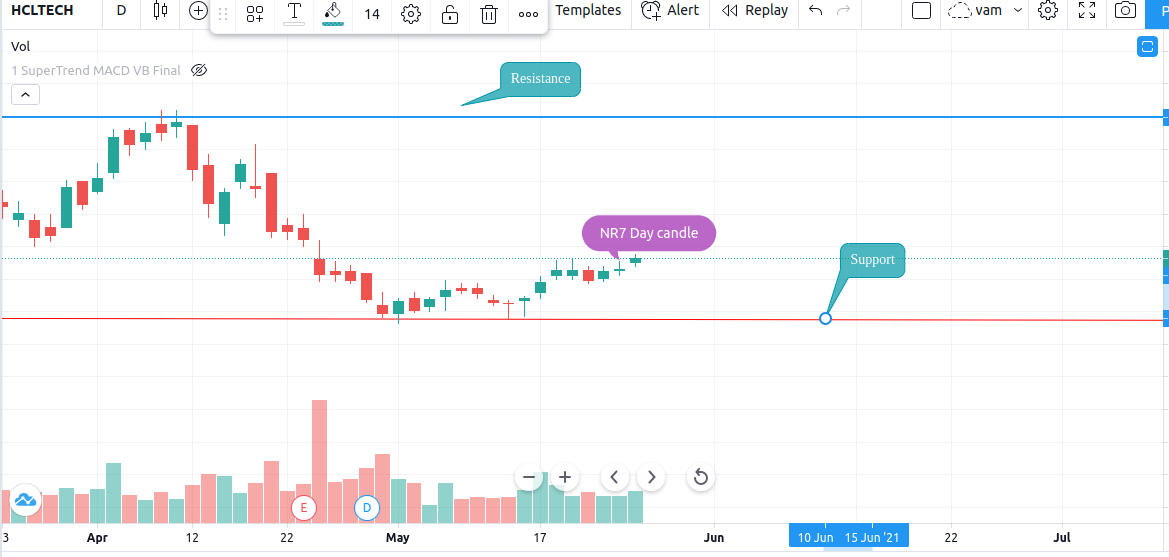Table of Contents
Support and Resistance in Trading Stocks, Indices – Importance
Now we Cover here are below important must know elements in Trading Stocks
- Support and Resistance Defined
- The Basics on how they are calculated
- Trendlines
- Moving Averages
- Other Indicators
Significance of Support and Resistance Zones
Support and resistance levels are used by technical analysts to identify price points on a chart where the odds favour a pause or reversal of a prevailing trend.
Trading level support and resistance are undoubtedly two of the most hotly debated aspects of technical analysis. These terms are used by traders to refer to price levels on charts that act as barriers, preventing the price of an asset from being pushed in a particular direction.
Definition of Support and Resistance:
Support occurs when a downtrend is expected to pause as a result of a concentration of demand.
A price level at which a downtrend is expected to pause due to a concentration of demand or buying interest is referred to as support. As the price of assets or securities falls, so does demand for the shares, forming the support line.
Resistance occurs when an uptrend is expected to pause for a short period of time due to a concentration of supply. Resistance zones form as a result of increased selling interest when prices rise.
Market psychology is important because traders and investors remember the past and react to changing conditions in order to forecast future market movement.
Trend lines and moving averages can be used to identify support and resistance areas on charts.
Once a support or resistance area or “zone” has been identified, those price levels can serve as potential entry or exit points because when a price reaches a point of support or resistance, it will either bounce back away from the level or go through the price level and continue in its direction—until it reaches the next support or resistance level.
HCLTech Daily chart with Support and Resistance:

Some trades are timed based on the belief that support and resistance levels will not be broken. Whether the price is stopped by a support or resistance level or breaks through, traders can “bet” on the direction and quickly determine if they are correct. If the price moves against you, you can close the position at a small loss. However, if the price moves in the right direction, the move profit could be substantial.
This is one of the most common types of support/resistance, but because the price of financial assets generally trends upward or downward, it is not uncommon for these price barriers to change over time. When the market is trending upward, resistance levels form as price action slows and begins to return to the trendline. This happens as a result of profit taking/booking or short-term uncertainty about a specific issue or sector. The price action that results has a stop/reversal effect on the stock price.
Traders pay close attention to a security’s price as it falls toward the trend line’s broader support.
In historical charts, this will have been an area that prevented the asset’s price from falling significantly.
The support/resistance of an identified level, whether discovered using a trend line or any other method, is considered strong.
Number of Touches
The more times the price tests a support or resistance area, the more significant the level becomes. When prices keep bouncing off a support or resistance level, more buyers and sellers notice and will base trading decisions on these levels.
Momentum of Price Move is important
Support and resistance zones are likely to be more important when they are preceded by steep advances or declines showing momentum of stocks. A fast and steep advance or uptrend will be met with more competition and enthusiasm and may be halted by a more importance resistance level than a slow, steady advance. A slow advance may not attract as much attention.
Volume at Certain Price Levels
The more buying and selling that has occurred at a particular price level, the stronger the support or resistance level is likely to be. This is because traders and investors remember these price levels and are best to use them again. When strong activity occurs on high volume and the price drops, a lot of selling will likely occur when price returns to that level, since people are far more comfortable closing out a trade at the breakeven point rather than at a loss.
Some points:
- Prices fall and test the support level, which will either “hold,” and the price will bounce back up, or the support level will be breached and the price will drop through the support and likely continue lower to the next support level.
- Determining future levels of support can drastically improve the returns of a short-term investing strategy because it gives traders an accurate picture of what price levels should prop up the price of a given security in the event of a correction.
- Also likewise determining a level of resistance can be advantageous because this is a price level that could potentially harm a long position, signifying an area where investors have a high willingness to sell the security.
- Support and resistance levels are one of the key concepts used by technical analysts and form the basis of a wide variety of technical analysis tools.
- The basics of support and resistance consist of a support level, which can be thought of as the floor under trading prices and a resistance level, which can be thought of as the ceiling.
